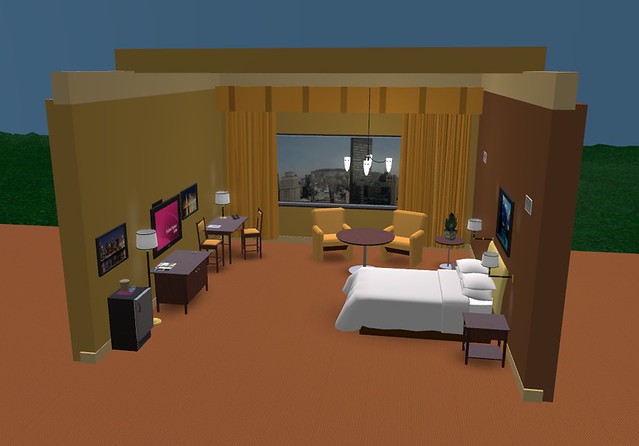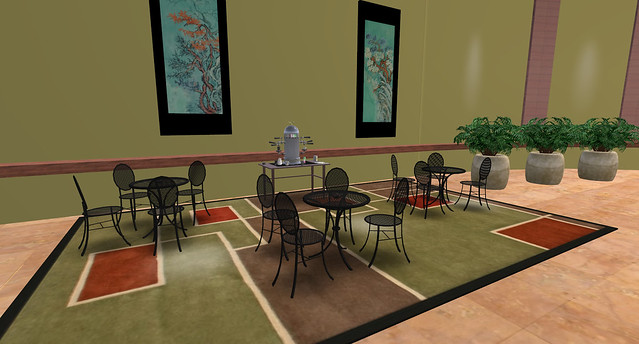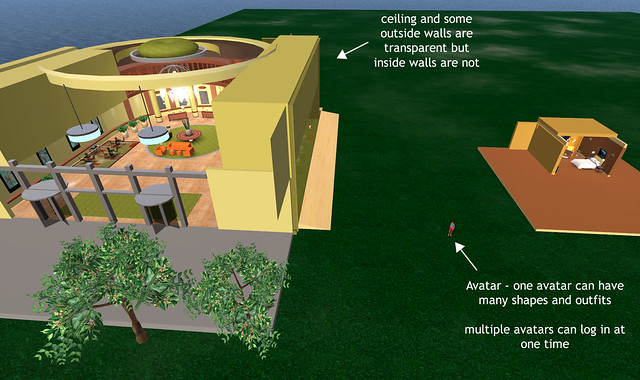After seeing a post on New World Notes that represented how I use OpenSim but left out the most compelling reasons as to why use OpenSim, I decided to reiterate what I’ve mentioned in the past.
One of the hats I wear is corporate eLearning developer for an international company (in 150 countries with 70,000 annual eLearning users). As such, I architect many aspects of our eLearning including just completing 14 courses (about 40 hours of seat time) as HTML5 content that is viewable by 99.2% of devices connected to the web.
In creating a large amount of eLearning, I am always looking for low cost solutions that are also fast for our team to use. Back in 2006, Second Life caught my attention, but not as a social place. I spoke at several conferences, such as the eLearning Guild’s DevLearn Conference and the Texas Distance Learners Association Annual Conference, on the use of Second Life as a 3D authoring tool – much like Blender.
The output is not photorealistic and has a distinct look (I’d say low-poly before using the term cartoonish) but the plus side of lower detailed graphics is that it doesn’t need rendering time. What you see on your monitor is fully rendered. This makes creating video footage for branched scenarios rapid, virtually free, and easy (and also fun!).
Your cast of characters never age or get new hairstyles, their warddrobes are alway constant, and the sets can cost little to nothing to build and store, and can be built without needing expert 3D modelling skills.
Rapid development and basically no cost. Hard to beat that combination!
In the last two years, I have not used Second Life and have an easier and completely free way to create this content – OpenSim. Specifically, OpenSim running from a USB drive.
One significant OpenSim/Second Life issue that many corporate eLearning developers run into are firewalls in the workplace. Using OpenSim in a portable manner, from Sim-on-a-Stick, eliminates those firewall issues.
Buiding a studio set, such as the hotel room and lobby below, is much easier than working with meshes in a traditional 3D application. OpenSim and Second Life use a small number of primitives (“prims”) used as building blocks. This is what gives the “simplistic” look but what also allows for real-time rendering at frame rates that exceed the 30 frames per second needed to create smooth video.
Details on creating video can be seen in my older posts and even from conference materials I have online.
OpenSim, specifically as “Sim-on-a-Stick”, is a great tool to add to your multimedia toolkit – plus it’s easy and I love the creative outlet it provides.
full image set hosted by iliveisl




